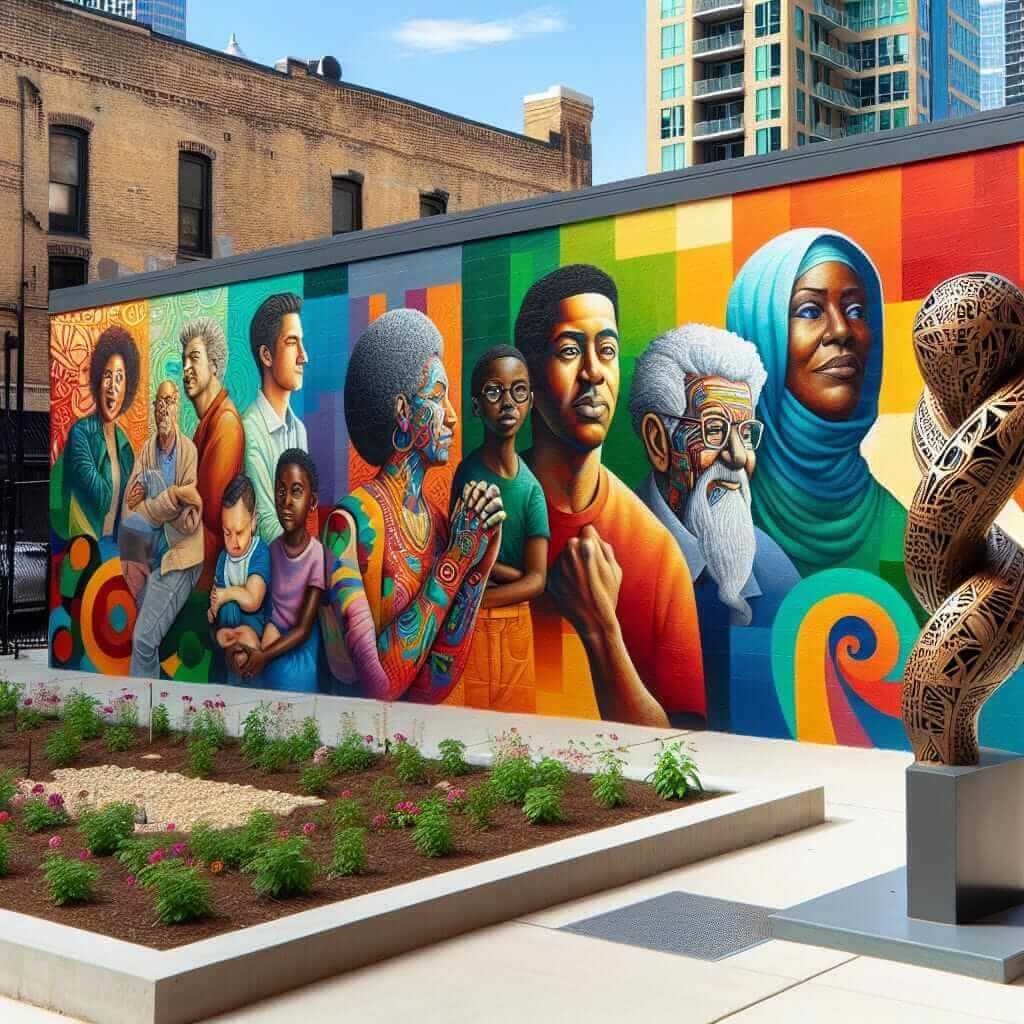Public art has been a recurrent theme in IELTS Writing Task 2 examinations over the years. Topics related to this field frequently appear due to their relevance and the broad discussions they can generate. Given its significance, public art is expected to be a recurring topic in future IELTS exams. Let’s dive into this topic, reference real past questions, and provide a comprehensive essay example to help candidates prepare effectively.
Real IELTS Writing Task 2 Questions on Public Art
In the past, IELTS candidates have encountered various questions related to public art, such as:
- “Some people believe that public art, such as sculptures and murals, plays a vital role in cities. Others think it is a waste of money. Discuss both views and give your opinion.”
- “Public art often reflects the culture and history of a place. To what extent do you agree or disagree?”
- “Governments should prioritize funding for public art. Do you agree or disagree?”
To create a practical writing example, we’ll focus on the following past question that encompasses a comprehensive discussion on public art.
Some people believe that public art, such as sculptures and murals, plays a vital role in cities. Others think it is a waste of money. Discuss both views and give your opinion.
Analyzing the Topic
This question falls under the category of discussion essays, where you need to present both sides of the argument before stating your opinion. Specifically:
- Discuss why some people think public art is vital.
- Address arguments by those who consider it a waste of resources.
- Provide your perspective with supporting reasons.
Essay Example
Topic: Some people believe that public art, such as sculptures and murals, plays a vital role in cities. Others think it is a waste of money. Discuss both views and give your opinion.
Public art has always sparked debates regarding its significance, with opinions divided between those who believe it enriches urban environments and those who consider it an unnecessary expense. This essay will explore both perspectives before concluding with a rational stance on the matter.
On one hand, proponents of public art argue that it greatly enhances the aesthetic appeal of cities. Sculptures, murals, and installations not only add visual interest but also transform mundane spaces into cultural landmarks. For instance, the vibrant murals in Philadelphia have revitalized urban neighborhoods, turning them into vibrant and attractive areas for residents and tourists alike. Additionally, public art serves as a cultural mirror, reflecting the history, values, and diversity of a community. Through artistic expressions, local artists can depict socio-cultural narratives, fostering a sense of identity and pride among the populace.
On the other hand, critics claim that public art constitutes a misallocation of public funds that could be better spent on essential services such as healthcare, education, and infrastructure. They argue that the practical needs of citizens should take precedence over aesthetic considerations. Furthermore, public art projects can sometimes be perceived as high-cost endeavors with little tangible return on investment, leading to concerns about their sustainability and long-term value.
In my opinion, while it is crucial to address immediate societal needs, the benefits of public art should not be underestimated. Public art, beyond its visual appeal, can play a vital role in community engagement and social cohesion. It provides a platform for dialogue, inclusion, and expression, which are essential for societal well-being. Moreover, public art can contribute to economic growth through cultural tourism, as seen in cities like Barcelona and London, where iconic artworks attract millions of visitors annually.
In conclusion, while there are valid arguments regarding the allocation of funds for public art, its benefits in terms of cultural enrichment, community engagement, and economic impact make it a valuable asset for urban areas. Rather than viewing it as a waste, cities should strive to balance aesthetic investments with essential services to create well-rounded, vibrant communities. (327 words)

Tips for Writing about Public Art
Vocabulary and Grammar Points
-
Vocabulary:
- Aesthetics (n): /iːsˈθetɪks/ – related to beauty or the appearance of something.
- Urban (adj): /ˈɜːrbən/ – related to a city or town.
- Sustainability (n): /səˌsteɪnəˈbɪləti/ – the ability to be maintained over the long term.
- Socio-cultural (adj): /ˈsoʊʃiˌoʊ-ˈkʌltʃərəl/ – related to both society and culture.
- Cohesion (n): /koʊˈhiːʒən/ – the action or fact of forming a united whole.
-
Grammar:
- Use complex sentences to show proficiency in language. For example: “While public art projects can be high-cost endeavors, their cultural and social benefits often justify the investment.”
- Employ modal verbs to discuss possibilities and opinions: “Public art can play a crucial role in…”
Essential Considerations
- Make sure each paragraph has a clear main idea and supporting details.
- Use transition words (e.g., on one hand, in addition, moreover) to connect ideas smoothly.
- Maintain a formal tone appropriate for an IELTS essay.
Conclusion
In summary, public art is a multifaceted topic that can lead to rich discussions in IELTS Writing Task 2. By exploring both sides of the argument and forming a balanced opinion, candidates can prepare effectively for this common examination theme. Practicing responses to questions similar to the model provided guarantees a robust approach to tackling future task prompts related to public art.